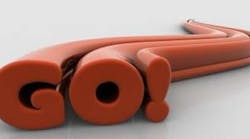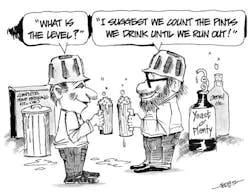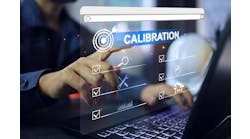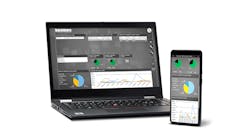Often when an operational problem occurs, the first question is what maintenance should be performed or was performed, as noted in the May 2010 Control Talk column "Drowning in Data, Starving for Information, 4" Knowledge of instrument performance can no longer afford to reside in the maintenance shop.
Stan: Ned Espy, technical director at Beamex Inc. has offered to bring us up to date on calibration system achievements and opportunities. Nick, what can you generalize about the state of calibration in the field?
Ned: Calibration efforts are different at every plant, but there's a common need to isolate a transmitter and provide a calibration test. Sixty percent to 80% of the instruments being calibrated in the field are used for either pressure or temperature measurement. The goal of field calibration is to reduce the need to bring instruments back to the shop, and to eliminate the use of clipboards and laptops to record data. Automated documenting calibrators in the field generate procedures and record results much faster and more accurately and consistently than is possible with manual systems. The pharmaceutical producers have the greatest documentation requirements followed by the power generation and pulp and paper industries. The chemical industry is all over the place in terms of its need for documentation.
Greg: In control rooms, we have seen the tremendous benefits of eliminating operator actions. Even if the automation is not the best to start with, it can be improved because the consistency of actions and data lends itself to analysis and improvement via the data historian. The first step for optimization is automation.
Ned: We also see similar opportunities for automated and integrated calibration systems. The time interval between the calibrations of non-critical instruments can be extended or changed from "scheduled calibration" to "calibration on demand." For example, the slope of the documented drift can be used to predict when the offset will exceed the application requirement. The evaluation of the degree and type of calibration adjustments can lead to the selection and justification of better instrument technologies. The use of these better technologies can greatly extend calibration intervals, but data analysis is needed to confirm and implement the opportunity. Additionally, calibration instructions are generated by the calibrator, leading to faster and more consistent procedures that can be improved with experience.
Stan: How or where do you find the better technologies and the application requirements?
Ned: A lot of the knowledge of what works best and what are reasonable expectations reside in the head of the experienced maintenance engineer or technician. The tapping and retention of this expertise is difficult at best.
Process engineers often have unreasonable accuracy expectations and no concept of what is practically achievable. The control engineer may have a better understanding of the control system capabilities, but less of an understanding of the process requirements.
You hear the statement "it works better over there" with no idea as to whether that is due to calibration, installation or operating conditions. The integration and historization of the data can lead to the sharing of knowledge, building on the capabilities of the professions. We help the users become metrologists, realizing fundamentals such as a calibrator should be at least four times more accurate than the sensor. The savings from more efficient calibration and paperwork reduction has been significant.
Traceability is critical for the pharmaceutical industry, as discussed in Control's March 2012 article, "The Search for the Asset Management Holy Grail, Part II."
Stan: The Rule of Four strikes again. We want the threshold sensitivity and resolution of the measurement to be less than one-fourth of the control band (allowable control error). Can your calibrators measure sensitivity?
Ned: The calibrators have digital displays with four decimal places, so a test could be done to determine the smallest detectable change in measurand. The resolution of the display sometimes annoys customers because of fluctuations in the last two digits. Damping can be added to screen out noise.
Greg: I can understand the users may get distracted and in some cases obsessed with negligible changes. I can see where it might be useful in some cases to get an idea of how much noise in a measurement originates in the sensor. Fortunately, temperature sensors rarely exhibit noise, except due to electromagnetic interference of thermocouple extension wires.
Stan: The most important common measurement is temperature because it not only determines the energy balance, but is also an inference of composition in separation processes and a major factor in biological and chemical reaction kinetics. What do you use for the field calibration of temperature sensors?
Ned: We use a dry block calibrator, often on a cart because of the 15- to 20-lb weight. The insert in the dry block can have multiple holes to accommodate different diameters of sensors. The user can pull out the insert and make custom-sized holes.
The insertion length should be at least 15 diameters to minimize conduction error. The axial uniformity is sufficiently maintained for 50 mm to insure the sensing part of resistance temperature detectors (RTDs) sees the same temperature. Radially, uniformity is maintained, so that multiple sensors see the same temperature. Normally one sensor is a high-quality RTD sensor with certified ITS 90 coefficients for characterization to 0.001 °F that acts as a reference. Instead of sending out the dry block for periodic certification, the reference sensor is sent out and updated coefficients are identified.
Greg: How can you make temperature calibration faster?
Ned: A low- and high-temperature dry block can be used. Also multiple sensors can be put into the insertion block, and during the time the dry block takes to change temperature, such as 10 to 15 minutes for a change of 50 °F, the user can be doing other tasks. A stability feature automatically determines when the sensor has reached final value, at which time it saves the result and chimes. Thus, the user can simply hit the start button and go on to installing and removing sensors.
The new MC6 documenting calibrator has two channels, enabling reporting of two sensors to a calibration management system. To record more data, a pocket PC is available. In the future, we expect an app will be available for smart phones and/or tablets, as well as a multiplexer for the calibrator.
Stan: What is the drift of thermocouples compared to RTDs?
Ned: The drift of thermocouples is much greater, part of which is due to higher thermal stress, since the thermocouples are used for higher temperatures. Setpoints in processes are biased in practice without knowing the cause because of the offsets in sensors. An offset of just 0.5 degrees can significantly affect many unit operations where temperature is the key process variable. We see the need for more accurate temperature calibration as a growth area.
Greg: What about pressure?
Ned: We use a pneumatic pump to provide pressures up to 300 psi and a hydraulic pump for pressures up to 15,000 psi. The Swagelock (or similar) fittings have a rating of 20,000 psi. The external module has a 0.015% of full scale and a 0.025% of reading accuracy. We are approaching the 0.015% of reading accuracy of the deadweight tester used to calibrate external Beamex modules.
Stan: Flow measurements are critical for controlling feeds, ratio control and closing material balances? What can you do here?
Ned: We can test the calibration of differential pressure (DP) transmitters for a differential head meter, but the uncertainty of the flow element and flow profile remains. For inline meters such as Coriolis, magnetic flow, turbine meters and vortex meters, the documenting calibrator can test the transmitter output, but vendor-specific simulators and diagnostic tools are used to test the electronics and communicate the results to the asset management system. However, installation effects, notably flow profile for vortex meters, are unknowns. Fortunately, the newest technology in Coriolis meters can analyze problems in the sensor based on harmonics for calibration.
Greg: The flowmeter can be removed and installed in multipurpose flow-proving systems in labs or plants where the flow is calculated from the change in weight by load cells. However, installation effects and process conditions usually are not exactly duplicated. In-situ flow-proving systems where a verified flowmeter is inserted for the test can include actual application conditions, as noted in Control's July 2005 article, "On-Site Flow Calibration Is Painful But Necessary." I would prefer the test meter be a verified Coriolis meter mass flowmeter rather than a volumetric turbine or positive displacement meter unless density changes are negligible (the case for custody transfer where composition is tightly controlled). The cost of using flow-proving systems is avoided by newer technologies in Coriolis and magnetic flowmeters that hold their calibration for several years in applications without multiple phase, coating, corrosion, erosion and installation problems.
Stan: Is the field calibration of level measurements problematic as well?
Ned: As with flowmeters, the best we can do is calibrate DP transmitters and test transmitter outputs. For radar, ultrasonic and laser, we again rely on the use of vendor-specific simulators.
Greg: Vessel or tank level can't be changed and visually verified except during water batching because of chemicals prohibiting the use of sight glasses and the opening of vessels and tanks. I would think diverse accurate technologies could provide in-situ calibration. Radar, load cells and the totalization feed or discharge flows by Coriolis meters could be used when level measurement accuracy is critical, which could be the case for raw material tanks and reactors.
Stan: We conclude with an oldie but goodie "Top 10 List" from our ISA book, Logical Thoughts at 4:00 a.m., with some updates.
Top 10 Terrifying Thoughts of Control Engineers Just Before They Fall Asleep
Just before you fall asleep and are caught between the conscious and subconscious world, prospective events can assume ominous proportions. This is an accounting of one such night after a particularly difficult day. The thoughts are arranged in order of scariness.
10. What if they gave the operators my phone number? Will I be blamed for every complex control system that doesn't work? Do they expect me to solve problems at 5:00 a.m. that I didn't understand at 2:00 p.m.?
9. Will I have to learn a new DCS? Also, what will I do when they change the data historian, operator interfaces, and configuration workstations? And, will my mind go blank, or will I suffer a mental meltdown and babble incoherently?
8. How does a Coriolis mass flowmeter work? How can I understand something I can't pronounce? If I ride a Tilt-a-Whirl will I get a feel for it before I get too dizzy?
7. Will I have to learn a new goals program? Will my automatic goals verbiage-generating program be obsolete? What if I have to write goals for real events that support the idyllic management goals of my boss?
6. What if the buyer goes out for quotes on my rush job? Will a request for bids be on the Internet? Will my control valves be plastic and made in an undisclosed location?
5. Is the cafeteria a test site for the company's products? How do they concoct such weird colors and tastes? Was that the chief chemist I saw coming out of the kitchen?
4. Could I be attacked by roving bands of project managers? What if they read the book How to Become an Instrument Engineer? What if they become violent? Will they wave doughnuts and force me to say kind things about schedules and budgets?
3. What if God is a lot like my boss? Will the ultimate performance review be a lot like last year's? Will my ratings depend more on what I didn't do than what I did do?
2. What if another nuclear engineer becomes president? Does an actor make a better president than an engineer? Is my manager an actor?
1. Will they eliminate the early retirement program? Will they run out of money just before I become eligible? Will I spend the rest of my life in a cubicle somewhere?







